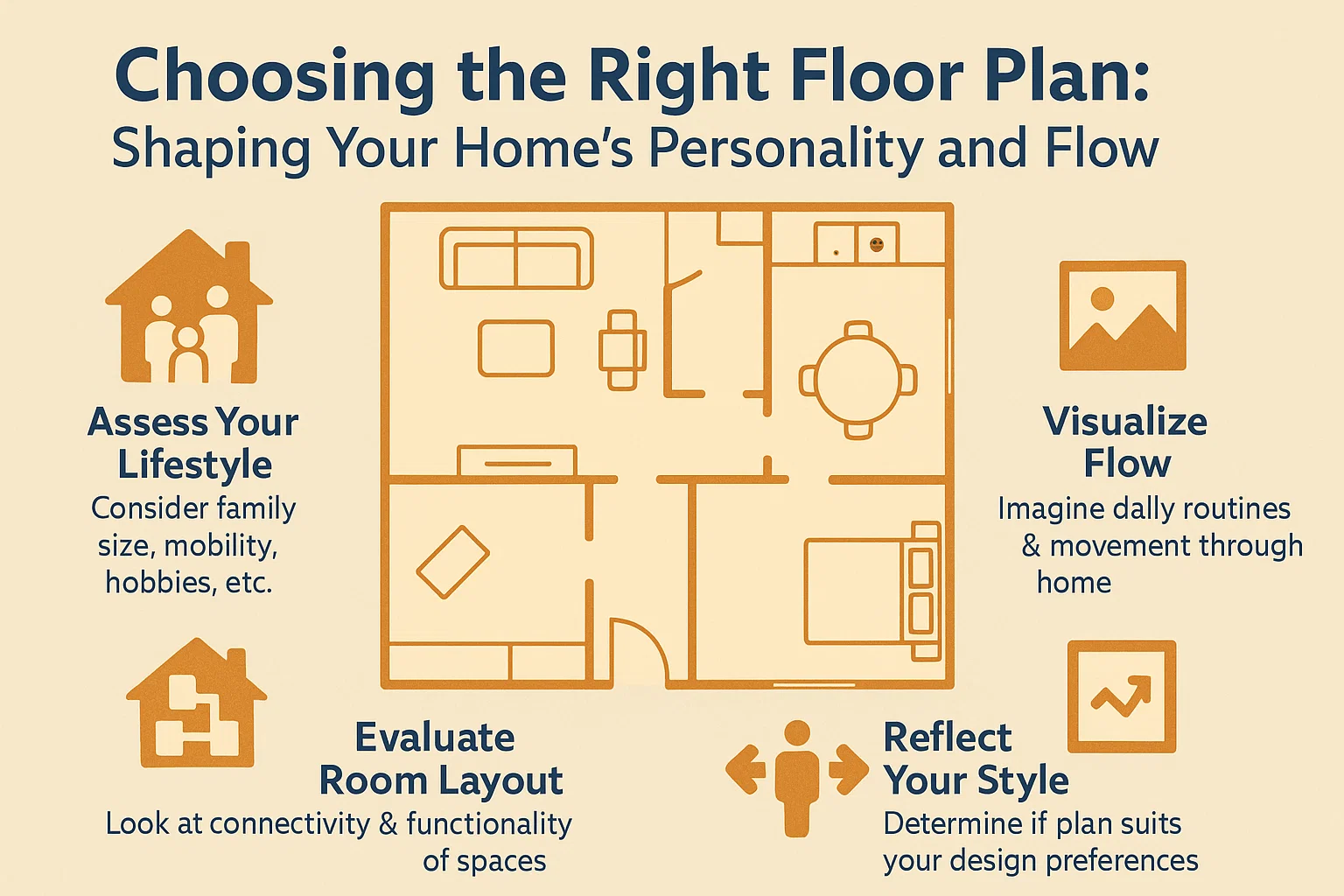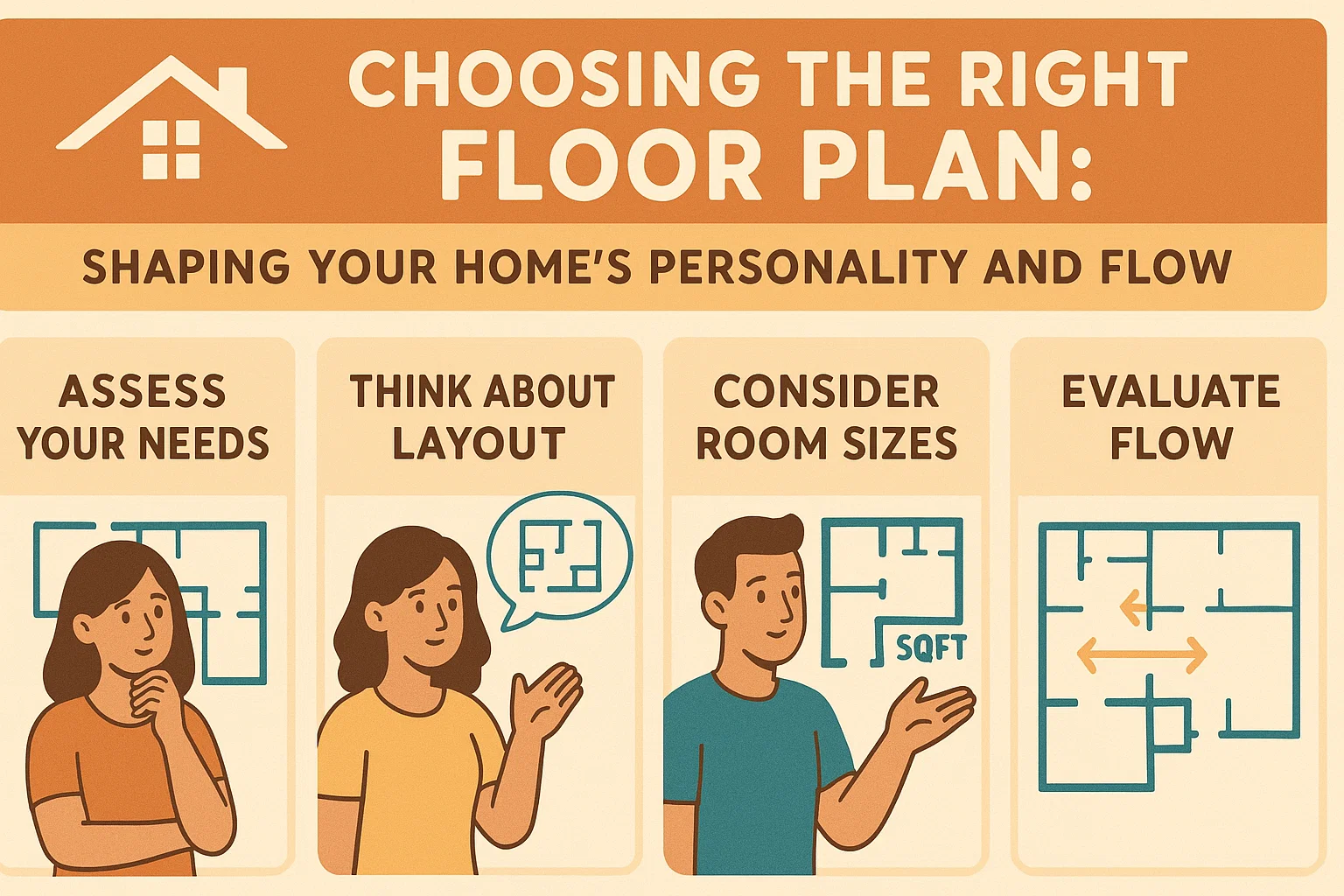Choosing the Right Floor Plan: Shaping Your Home’s Personality and Flow

Choosing the Right Floor Plan: Shaping Your Home’s Personality and Flow
As you plan your new home, selecting the floor plan is one of the most critical decisions you’ll make. The arrangement of rooms, the flow between spaces, and the efficient use of square footage collectively shape your home’s atmosphere and functionality. Builders often emphasize this by creating furnished model homes for prospective buyers to explore. But if your preferred floor plan isn’t available as a model, these strategies will help you interpret two-dimensional blueprints like an expert.
Mastering Sight Lines
Two homes with similar square footage can feel dramatically different in size, and the reason often lies in sight lines—the visible connections between spaces. To evaluate them:
- Print the floor plan and use a ruler to draw straight lines from key vantage points (e.g., doorways, seating areas).
- Note whether lines stop at walls or extend into adjacent rooms, revealing features like fireplaces or outdoor views.
- Test perspectives from daily life: What’s visible from the breakfast table? The primary bedroom? A well-designed plan teases glimpses of adjoining spaces, creating intrigue and a sense of expansiveness.
Open kitchens facing family rooms remain popular for this reason, fostering interaction between cooks and guests. Modern designs even turn kitchens into “stages” where chefs can entertain while preparing meals.
Optimizing Traffic Flow
Hallways are increasingly rare in newer homes, as rooms themselves often serve as pathways. While this maximizes space, poor planning can lead to awkward routes. Consider:
- Horizontal Banding: Align doorways on the same side of adjacent rooms to avoid diagonal traffic cutting through living areas.
- Stair Placement: Centrally located stairs (near kitchens or family rooms) improve accessibility and space efficiency compared to front-entry designs.
- Kitchen Access: Aim for at least three entry points to prevent bottlenecks during gatherings.
Balancing Privacy and Shared Spaces
A thoughtful floor plan separates private zones from social hubs:
- Position primary bedrooms away from noisy areas (e.g., media rooms) and children’s bedrooms. Ideally, place them in their own wing or on separate floors.
- Design communal spaces for connection: Eat-in kitchens and “children’s retreats” (shared play/study areas linked to bedrooms) encourage family interaction while preserving adult privacy.
Strategic Window Placement
Windows influence both aesthetics and sight lines. A few well-placed windows can:
- Frame outdoor views from key rooms (e.g., above a kitchen sink or adjacent to a reading nook).
- Enhance natural light without overwhelming a space—even a single large window in a vaulted room can create drama.
- Maintain privacy by avoiding direct sightlines into neighboring homes.
By analyzing these elements in your floor plan, you’ll create a home that feels spacious, intuitive, and tailored to your lifestyle—no model tour required.




